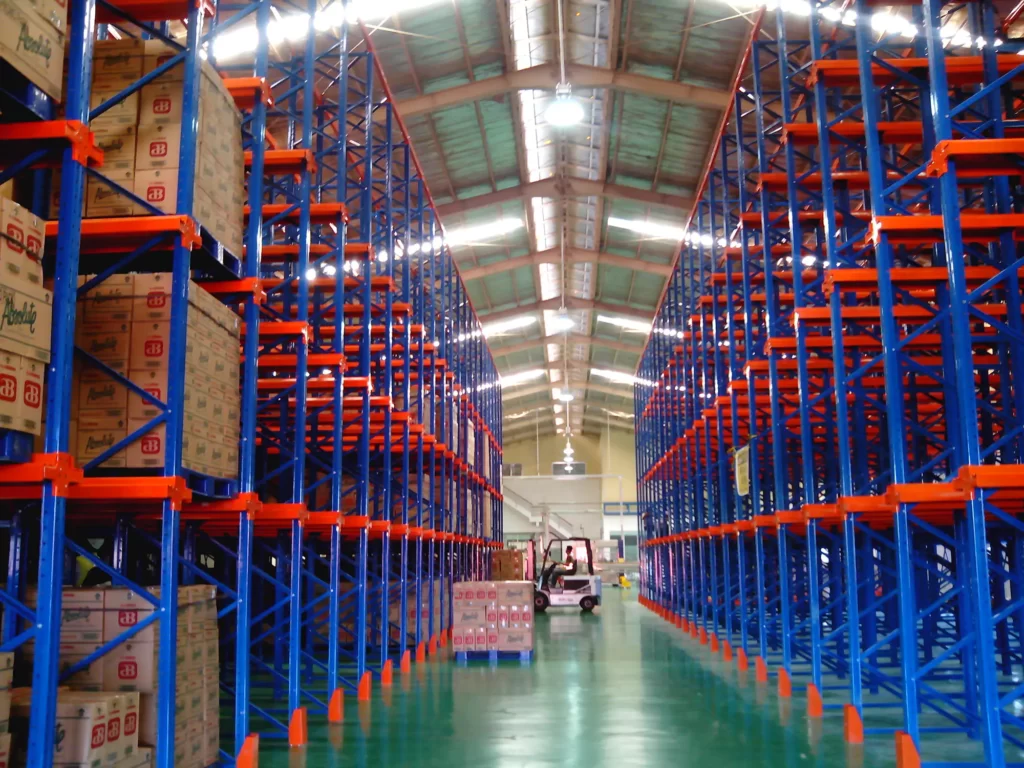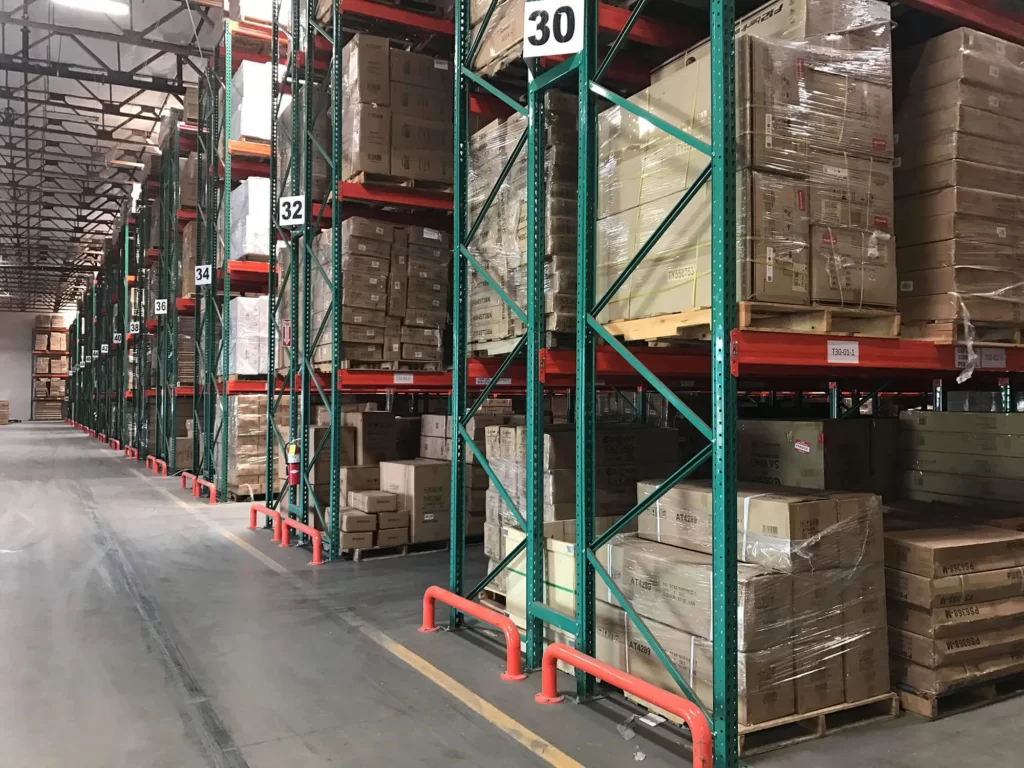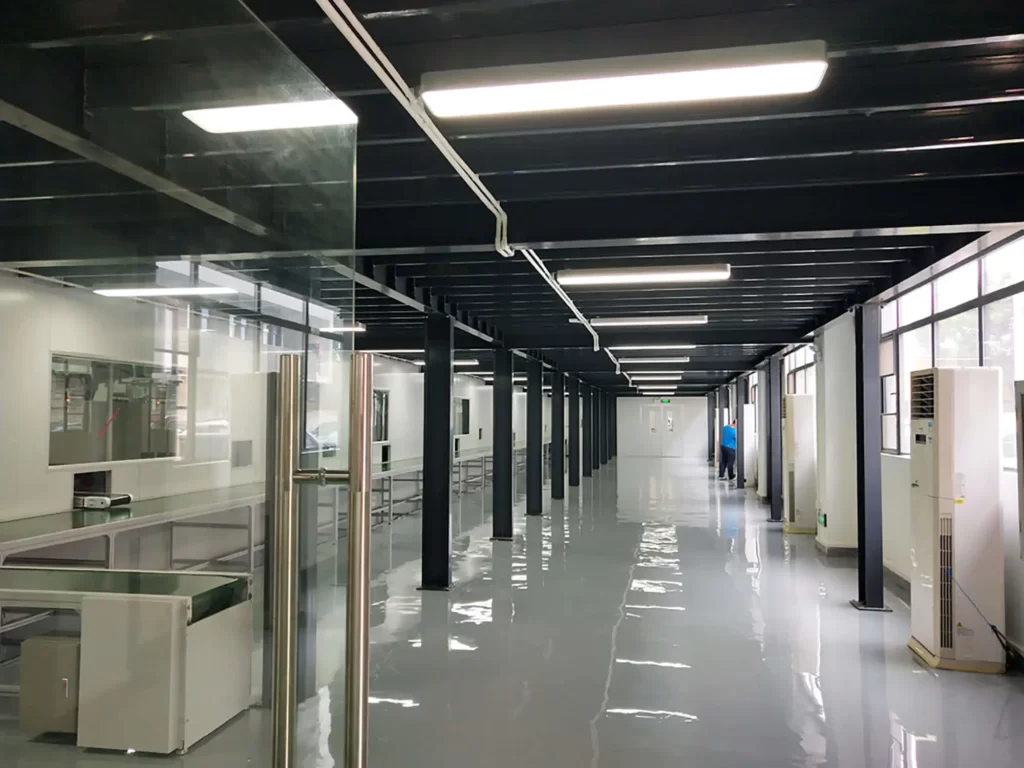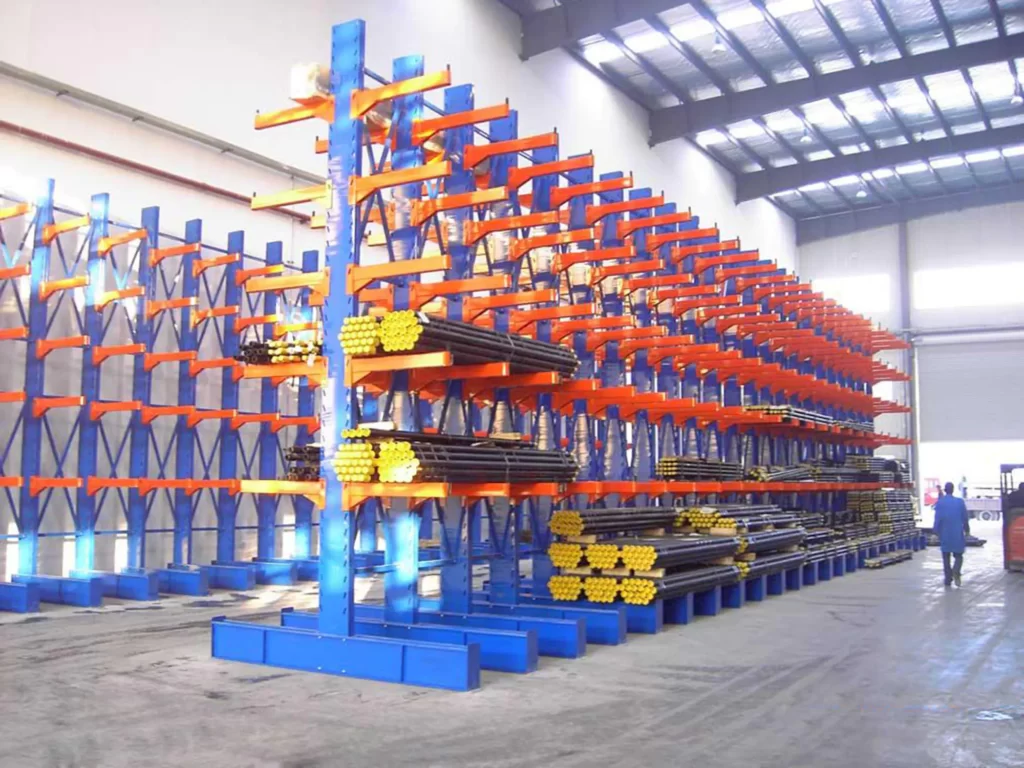High pile storage is a storage system where the products or materials are stored in vertical stacks with a height greater than 12 feet. High-pile storage can contain combustible materials packed in piles, pallets, racks, or shelves. Combustible materials may include high-hazard commodities that require certain safety measurements.
Rubber tires, flammable liquids, Group A plastics, idle pallets and other related commodities with similar properties are included in high hazard products. Some industries require storage in large quantities, therefore, they use high pile storage systems. There are rules and regulations for storing high pile storage that should be followed to avoid any accidents.
Let’s explore what exactly includes high pile storage and how the system works for such storage systems.
Introduction to High Pile Storage.
As businesses grow and expand, they often require more storage space to accommodate their increasing inventory. High pile storage is a popular solution in industrial facilities as it allows for the maximum use of vertical space. Also, it enables businesses to store large quantities of materials or products without the need for additional floor space.
By stacking items vertically, high-pile storage systems can increase storage capacity, making it easier to organize and manage inventory. This streamlined storage and retrieval process can enhance productivity, reduce labor costs, and optimize inventory management.
Moreover, high-pile storage is a cost-effective solution compared to other alternatives. For instance, renting additional warehouse space or investing in expensive automated storage and retrieval systems can cost you additionally and your overall expense will increase.
Despite its benefits, businesses must take into account the potential fire hazards that high pile storage can incur. Proper implementation of fire safety measures and adherence to regulatory requirements are crucial to mitigate these risks and ensure the safety of employees, equipment, and inventory.
High pile storage is a valuable storage solution for industrial facilities that can help maximize storage capacity and streamline inventory management. However, businesses must also prioritize fire safety measures to ensure the safe and efficient operation of their storage systems.
High Pile Storage: Importance of Safety Permits Ahead of Time.
Before you store material in the warehouse, you need to require a high pile storage permit. When you have a building with storage above 12 feet high and in some cases 6 feet in an area over 500 square feet, then it is necessary to get a permit for your warehouse building.
Typically, the fire marshal for your jurisdiction is responsible for issuing these permits. To apply for a permit, you will likely need to provide detailed information about your storage system, such as:
- Scale drawings
- Measurements
- Ceiling heights
- Description of the items you will be storing
- Any existing fire suppression systems
Your local jurisdiction may have additional requirements that you will need to fulfill to obtain the permit.
The Fire Protection International Consortium, Inc. (FPI) checks the following areas for your drawing and reports:
- The commodity classification of your products.
- The required fire sprinkler design criteria.
- Fire Code storage requirements include issues like fire department vehicle access, firefighter doors, and smoke vents.
- Storage configuration compliance with the code regarding egress travel, and the proper number of exits.
Requirements for High-Piled Combustible Storage
High-piled combustible storage is the storage of combustible materials in pallets, racks, shelves, or piles. High pile combustible storage fire code is defined according to the class of the commodities with hazard level.
The requirement for high-pile combustible storage depends upon:
- Commodity class
- Size of the area
- Arrangement of commodities being stored
Hence, commodities have been categorized into five different classes. Where class I is the lowest hazard and V is the high hazard.
- Class I commodities: noncombustible products on wooden pallets in corrugated cartons/ paper wrappings. Some examples of items that fall under this category are metal products that don’t catch fire, insecticides that are dry, boards made of gypsum, and food stored in containers that don’t catch fire.
- Class II commodities: Class I products with combustible packaging. This can include food that is stored in containers that can catch fire easily, as well as very thin wire that is wrapped up and put into boxes.
- Class III commodities: Wood, paper, natural fiber cloth. It includes things like fertilizers in bags, food stored in plastic containers, and liquids that don’t catch fire and are stored in plastic containers are included in this category.
- Class IV commodities: Class I, II, and III products. This category comprises items such as solid metal products that can catch fire, level 2 aerosols, and oil-based paints that are stored in containers that can catch fire. It is crucial to store these items safely and in accordance with the relevant regulations to prevent any accidents that may harm employees, damage property, or pose a threat to the environment.
- Class V commodities: greater hire hazard than class I to IV. It includes
Types of High-Pile Storage.
High-pile storage systems come in various types to accommodate different materials and storage needs. So, here are the types of high-pile storage systems for you to choose wisely for your warehouse.
1. Static High Pile Storage
The most basic form of high pile storage is static storage, where materials are stacked vertically on the floor or on pallets. This is a simple and cost-effective method, but it may not be suitable for businesses with limited floor space or for storing materials that require special handling.
2. Rack-Supported High Pile Storage
Another type of high-pile storage is rack-supported storage. It uses vertical racks to support the stacked materials. This system allows for greater storage capacity and reduces the need for additional floor space. Rack-supported storage is ideal for storing items that are uniform in size and shape.
3. Automated High Pile Storage
Automated high-pile storage is another option, using conveyors, cranes, and robotics to move and stack materials. This system can increase efficiency and productivity. Also, it is generally more expensive to install and maintain as compared to other types.
4. Mobile High Pile Storage
Mobile high pile storage is a system where materials are stored on mobile racks or shelves that can be moved laterally to create aisles for access. This system is ideal for businesses with limited floor space or that require frequent access to stored items.
5. Shelving High Pile Storage
Finally, shelving high pile storage uses adjustable shelving units to support the stacked materials, allowing for flexibility in the height and arrangement of the stored items. This system is ideal for businesses with small or irregularly shaped items to store.
Each type of high-pile storage has its advantages and limitations, and businesses should carefully consider their specific needs and requirements when selecting a storage system.
Fire Hazards Associated with High Pile Storage.
There are lots of things associated with high pile storage. One of which is fire hazards, therefore, you need to be extra cautious about daily ongoing activities in your warehouse. Some of the reasons are mentioned below:
1. Common Causes of Fire in High-Pile Storage
Fires in high-pile storage areas can be caused by a variety of factors, including electrical issues, smoking, arson, spontaneous combustion, poor housekeeping, improper storage, and flammable liquids and gases. Let’s explain these causes now:
- Electrical issues: Fire is mostly caused by electrical issues. Electrical issues usually occur with some problems like wire melting or there might occur sparks due to lights, fans, or conveyor belts malfunctioning. It can ignite combustible material in the pallets or racks which can cause damage to the overall warehouse. If you want to reduce this risk then you require regular maintenance of equipment and the use of appropriate electrical safety measures.
- Smoking: First and foremost safety measurement for a high-pile combustible storage system is to ban or restrict smoking within the facility. Because smoking is a significant fire hazard in high-pile storage areas. Cigarettes and other smoking materials can ignite flammable materials or create sparks that can trigger a fire. It is best to take precautionary measures beforehand to prevent fires caused by smoking and prohibit smoking in or near the storage area.
- Arson: Arson is a deliberate act of setting fire to property. It might be a revenge case or a personal benefit for someone to do such a criminal act. Either way, it is a major risk for high-pile storage areas. Particularly, if the stored materials contain mostly combustible material. You can lose your asset for life or can claim the damage with damaged goodwill. To prevent this risk, it is important to install security measures such as surveillance cameras and access control systems with trained security guards.
- Spontaneous Combustion: When there is a random ignite without any external heat source then it can be caused due to certain materials. These materials might include oily rags or paper that can create heat and generate spontaneous combustion. In order to avoid spontaneous combustion make sure to store materials in a well-ventilated area that should be away from other combustible materials.
- Poor housekeeping: Another and important cause of fire in high-pile storage is poor housekeeping. It can be due to accumulated dust, debris, and other combustible materials. Therefore, check on the cleanliness of your high pile storage area regularly. Also, it should be removed regularly to reduce the risk of fire because it might create a fuel source for fires in high-pile storage areas.
- Improper Storage: Improper storage of materials that contain combustible commodities can be a serious risk to catch fire easily. Improper storing practices might include; storing materials too close together or storing incompatible materials in close proximity to each other. It can increase the risk of fire more quickly. There should be proper storage practices like using appropriate shelving, stacking materials in a safe and organized manner, and avoiding overcrowding. This way you can rest assured of your valuable property.
- Flammable Liquids and Gases: Finally, the last case for catching fire in high pile storage is due to flammable liquids and gases. Storing flammable liquids or gases in high-pile storage areas can create a really bad fire hazard. High pile storage requires proper ventilation or containment measures. You need to fulfill all the required rules and laws for a high pile storage system to avoid such damages. Also, to reduce this risk, making sure to store items appropriately and fulfill handling measures, such as using appropriate containers and ensuring proper ventilation, should be implemented.
It is important to implement fire safety measures beforehand and have them checked on a regular basis. To prevent fires in high-pile storage areas, regular maintenance of equipment is also important. Proper storage practices, good housekeeping, and adherence to regulatory requirements should be met accordingly.
2. Consequences of a Fire in High Pile Storage
- Fires can cause serious injuries just not physically but also mentally. Fires in high-pile storage areas can result in damaging businesses in many ways. Also, it can have adverse effects on employees and the surrounding community. Fires can be really bad, therefore, it is important to be careful and follow safety rules and implement proper safety hazards for high pile storage.
- One of the most significant consequences of a high-pile storage fire is the loss of property. it can result in significant financial losses for the business after which not only the owner suffers but all the employees and labor get affected as well. When the stored items are destroyed the equipment and facility require a huge cost to get repaired. Additionally, business operations get interrupted which can be caused by high-pile storage fires. Therefore, a delay in the production, distribution, and delivery of goods, leads to reduced revenue. And the adverse consequence is the negative impact on the business’s reputation.
- It’s important to think about the safety of the workers when it comes to high-pile storage fires. These fires can hurt employees in many ways like burning them, making them breathe in smoke, or making the structure fall down on them. This can be very dangerous and even cause death. With such a history of any firm, no more employees or laborers would be willing to work there in the future. Additionally, the fires can release dangerous things into the air and the environment, which can hurt people and animals that live nearby.
- When it comes to high-pile storage fires, regulatory compliance is a key factor that businesses must consider. Failure to comply with regulations related to fire safety, handling hazardous materials, and protecting the environment can result in legal and financial penalties. Therefore, it’s important for businesses to ensure that they are following all the regulations to avoid any negative consequences that may impact their reputation and financial well-being.
- Fire in high pile storage can make businesses face increased insurance premiums or difficulty obtaining insurance coverage. Because in such businesses the chances of a fire in the future are high. In a nutshell, the business’s reputation gets damaged in every aspect because it may be perceived that the company fails to set fire safety precautions at the earliest. Also, consumers might think of the firm as having inadequate fire safety measures or not taking proper precautions to protect employees and the community.
3. Regulatory Requirements for High Pile Storage
The general fire protection requirements for the high pile storage are as follows.
- Automated Sprinklers
- Fire protection
- Fire detection
- Building access
- The number of doors should be mentioned
- Aisle Maintenance
- Aisle Width
- Sprinklered building
Some of the main and important requirements will be discussed ahead in this article.
Factors That Influence High Pile Storage Safety.
High pile storage safety should be a priority for any business. There are factors that influence the safety of high pile storage, like structural considerations, fire suppression systems, material handling equipment, and training and procedures.
Ensuring the safety of high-pile storage requires consideration of several factors that can influence the risk of fire and the safety of employees and property. Building design plays a critical role in high-pile storage safety, and the design should include adequate clearance between storage racks, adequate aisle space, and proper ceiling height. In addition, the presence of effective fire suppression systems, such as sprinkler systems, can significantly reduce the risk of a high-pile storage fire.
High-pile storage of hazardous materials requires special consideration to ensure safety. Hazardous materials should be stored in areas with proper ventilation, and employees should be trained on the proper handling and storage of hazardous materials. Adherence to regulatory requirements related to fire safety, hazardous materials handling, and environmental protection is crucial in maintaining high-pile storage safety.
The safety of high-pile storage depends on several factors, including building design, fire suppression systems, employee training, housekeeping, hazardous materials handling, and regulatory compliance. By taking these factors into account and implementing appropriate safety measures, businesses can reduce the risk of high-pile storage fires and protect their employees, property, and the environment.
Protection Required for High Pile Storage.
There are six main categories of protection required for high-piled storage areas, which include automatic fire-extinguishing systems, fire detection systems, building access, curtain boards, smoke and heat removal, small hose valves and stations, and storage limitations.
- An automatic fire-extinguishing system, such as an ESFR sprinkler system or a standard ceiling system with in-rack sprinkler systems, is typically provided for protection against fires.
- For fire detection systems, beam-type smoke detection systems are usually required in addition to smoke or heat detection.
- Building access is a crucial aspect to consider when it comes to fire safety. This is because it provides external access doors and a road around the building that firefighters can use to respond to emergencies. When curtain boards and smoke and heat removal are required, automatic smoke and heat vents (operable skylights) are provided, and curtain boards that extend 6 ft down from the ceiling into areas of 10,000 sq ft or less are used to divide the warehouse space.
- Small hose valves and stations are an essential component of fire safety in storage areas. These stations typically consist of hose valve connections that measure 1.25 inches in diameter and are equipped with 100 feet of hose that is evenly spaced throughout the storage area. They are typically required for manual firefighting and mop-up operations by the fire department. Storage limitations, including restrictions on aisle widths, size of storage piles, and flue spaces, are also implemented.
- The most challenging aspect of protection design is the sprinkler system. It can be costly but provides the most protection for the investment. Recent advances in sprinkler technology have led to a wider selection of products with different flow characteristics.
Will Your Warehouse Meet the Requirement for High-Pile Storage?
Determining whether your building meets the requirements for high-piled storage can be done by asking four key questions that provide a comprehensive understanding of the building’s condition and contents.
- The age of the building is a critical factor, as newer buildings are more likely to pass permit applications than older ones. However, if an older building has undergone recent documented updates, it is likely to be up to code and therefore pass the application process.
- Another crucial factor is the quality of the sprinklers. If an older building has recently had new sprinklers installed, it is in a much better position to pass the application process than one with original sprinklers. In the absence of sprinklers, passing the application is unlikely unless the stored products are non-flammable.
- The flammability of the stored products is another important consideration. While storing non-flammable products, such as metal screws, is less likely to raise red flags, highly flammable products, such as cotton balls or batteries, require compensatory measures in other areas.
- The height at which products are stored is also a crucial factor, with taller storage necessitating more requirements. It is advisable to store highly flammable products on the ground and under 6ft to minimize the requirements for high-piled storage.
Conclusion
Ensuring the safety of people and property is crucial when it comes to protecting high-piled storage areas. Implementing measures such as automatic fire-extinguishing systems, fire detection systems, building access, curtain boards, smoke and heat removal, small hose valves and stations, and storage limitations are essential for mitigating the risk of fire in these areas. Although the sprinkler system can be a challenging and costly aspect of protection design, it offers the most protection for investment. Overall, these safety measures can significantly reduce the likelihood of catastrophic fire and safeguard businesses that rely on high-piled storage areas.








